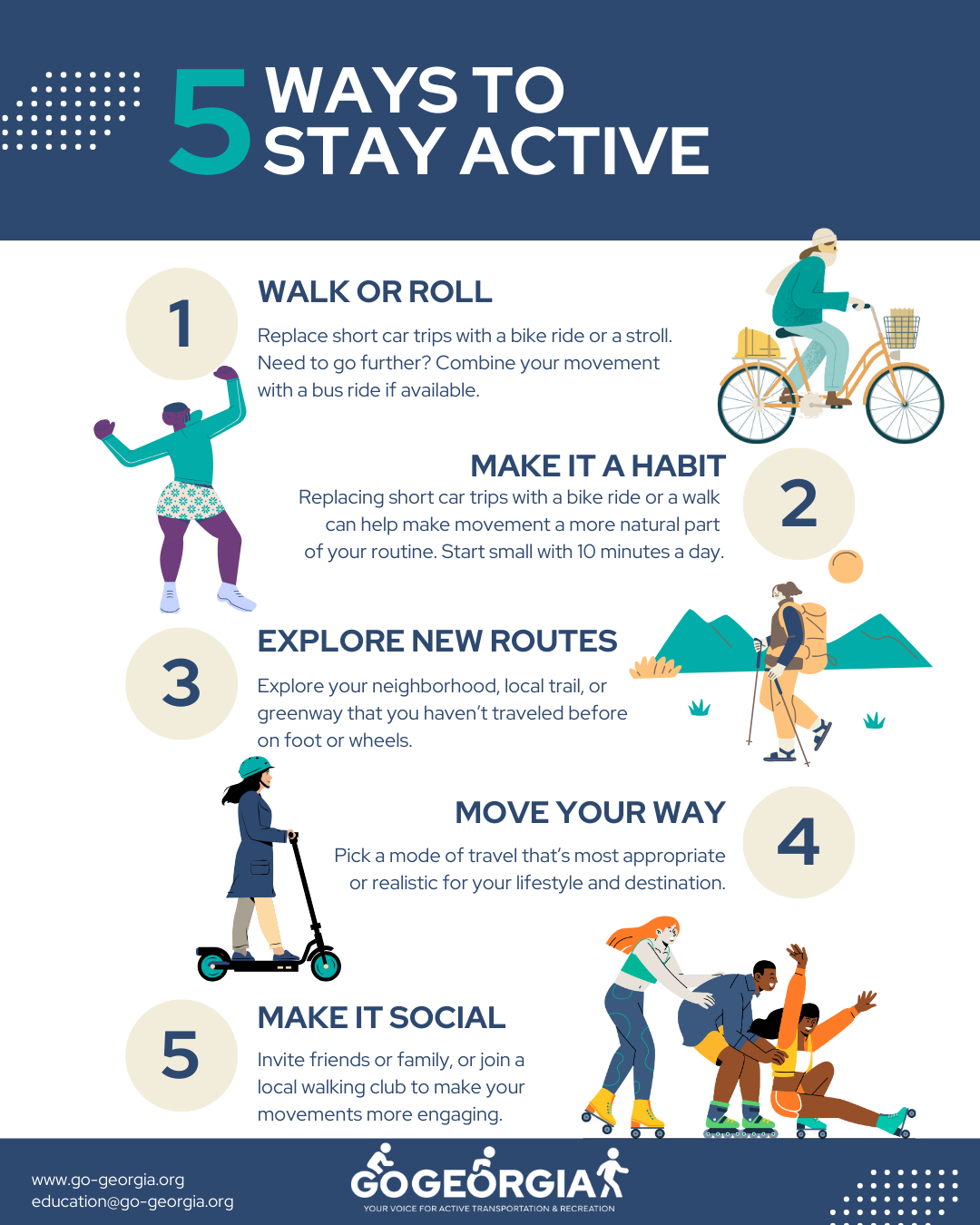
An easy and rewarding way to boost your wellness is through active transportation—biking, walking, and rolling.
Choosing human-powered modes of transportation can be a great alternative to your normal commute, depending on where you live. And as a recreational pastime, active transportation can do wonders for your mind and body.
Boosts Physical Health: Regular walking and biking can improve cardiovascular health, strengthen muscles and joints, help manage chronic pain, and reduce the risk of chronic diseases. Getting at least 150 minutes a week of moderate physical activity can help you manage your weight, reduce your risk of heart disease, reduce pain and improve function, mood, and quality of life for adults with arthritis, help control blood sugar levels and lower risk of heart disease and nerve damage for people with type 2 diabetes, and help support daily living activities and independence for people with disabilities (CDC, 2025).
Improves Mental Well-being: Moving your body outdoors and in green spaces can help release endorphins, reduce anxiety, manage stress, and help you feel more grounded. Regular physical activity can also contribute to the primary, secondary, and tertiary prevention of cognitive decline and dementia (Alzheimer's Association, 2018; 2018 Physical Activity Guidelines Advisory Committee, 2018; Baumgart et al., 2015).
Builds Better Habits: Replacing short car trips with a bike ride or a walk can help make movement a more natural part of your routine—not just something you have to schedule.
Reduces Your Carbon Footprint: Leaving the car at home helps improve air quality and reduces your environmental impact. A study had shown that cyclists had significantly lower total CO2 emissions than non-cyclists, and even if not all car trips can be substituted by biking or walking, the potential for decreasing emissions is very high by using active transportation for short trips (Transportation Research Part D: Transport and Environment, Volume 93, 2021).
Walk or Roll to Run Errands: Think about a short trip you’d normally drive to. Can you get there without a car? Try swapping one car trip this week for a walk, bike ride, scooter, or wheelchair roll to your nearest store, library, or coffee shop.
Try a New Route: Explore your neighborhood, local trail, or greenway that you haven’t traveled before on foot or wheels.
Invite Family or Friends: Turn your wellness goals into quality time. Walk with your kids to school, bike with a friend, or join a local walking group.
Make It a Habit: Healthy habits are good for all ages, and there are long-term benefits to making movement and physical activity part of your routine. Start small by setting easy, achievable goals. Try going out for 10–15 minutes a day of active movement, and build it up gradually every week.
Active transportation is more than just getting from Point A to Point B. Biking, walking, and rolling can connect you to your mind and body and open you up to your community. So lace up your sneakers, strap on a proper helmet, or roll down the sidewalk, and start investing in your wellbeing! It’s even better if you try active transportation with others, so you can build up and encourage your community to share in outdoor spaces together.
Benefits of Physical Activity (CDC)
Wellness Toolkit (National Institutes of Health)
Health Benefits of Walking (America Walks)
Mental Health Benefits of Riding Your Bike (League of American Bicyclists)